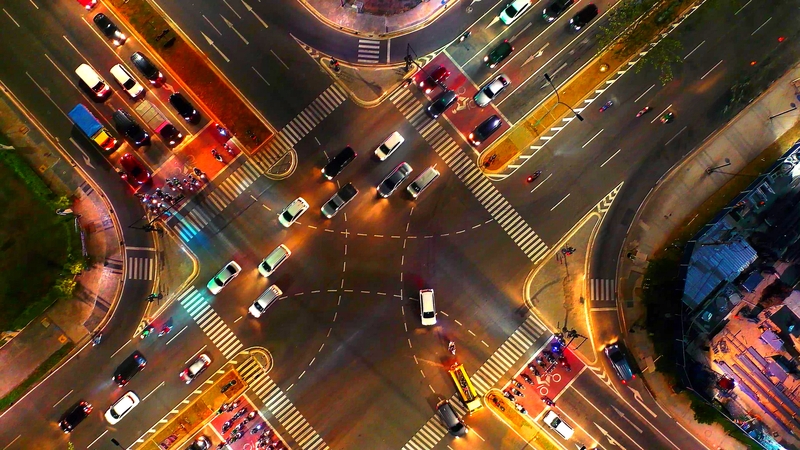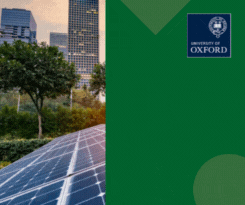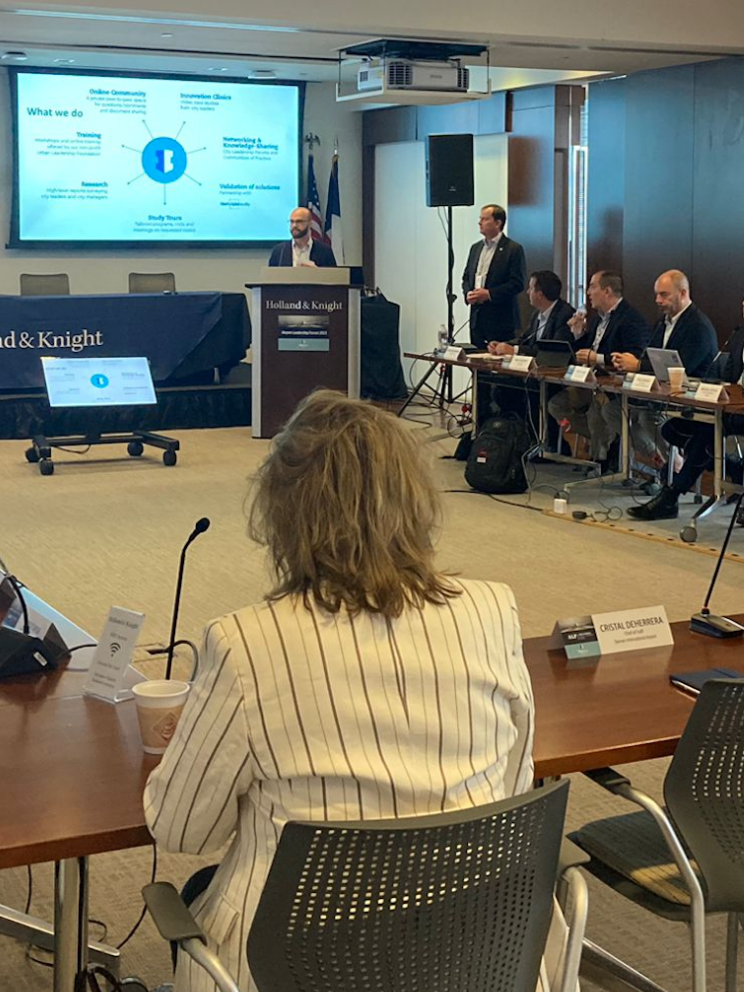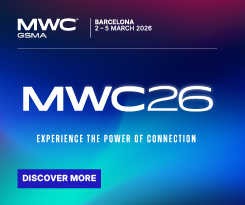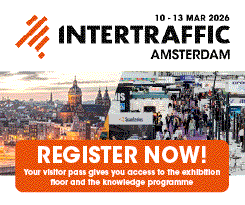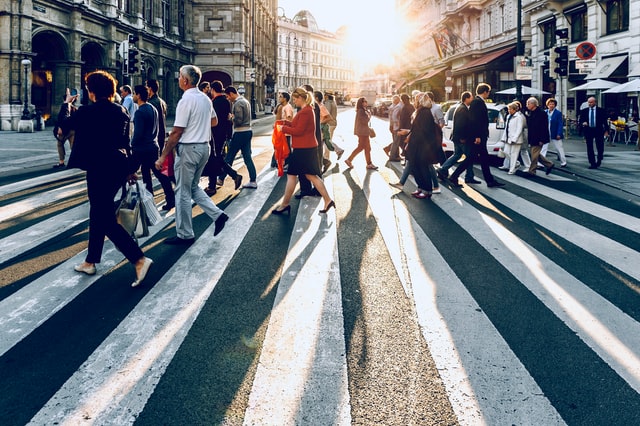
Photo: Jacek Dylag on Unsplash
The evolving art of urban regeneration
13 December 2021
By: Bas Boorsma, Chief Digital Officer to the City of Rotterdam, and Professor of Practice, Thunderbird School of Global Management

I recently participated in the UN-Habitat expert group meeting on urban regeneration as a tool for inclusive and sustainable recovery, which took place in Bilbao, Spain. I had several reasons to accept: it was wonderful to share some of my own experience of course, but on seeing the incredible resumés of others joining, I knew I was going to learn a lot.
The meeting focused on neighborhood regeneration, care, community participation and sustainable development, and addressed the very concept of ‘urban regeneration’ itself.
All of this ties in nicely to the Rotterdam agenda, but the topics also represent the current frontier of urban innovation and smart city strategies in general. Below are my thoughts and takeaways from the meeting.
Shared language
It was clear that all leaders share a sense of urgency. We are living in a global ‘perfect storm’, and time to mitigate it is short. Delivering on the United Nations Sustainable Development Goals (SDGs) within cities is happening incrementally, but we can hardly be regarded as on track.
Part of the challenge is that the SDGs get lost in translation when they meet the reality on the ground. To quote one of the leaders in the room: “If I tap an average citizen on the shoulder to talk to me about SDGs, it is almost certain they are clueless as to what I’m talking about.”
We lack a commonly shared language around ‘urban complexity’. Now, you might argue that even that very sentence may get lost in translation on the ground but that doesn’t make it any less true. We need to build a common framework, a common language and a system of co-creation.
In addition, colleagues agreed that not all the data needed to measure SDGs is readily and horizontally available within municipalities. As one EU representative said: “That shows that municipal data strategies are still not sufficiently managed holistically.”
From solutionism to ‘processism’
A common theme underlined what I have been stressing for a long time: it’s not about technology or solutions. It is, however, about behavior change and culture. That is always going to be slow and education is central.
The smart city space is illustrative of the evolving dynamics of urban innovation agendas at large. Smart city started out as a narrative of ‘solutionism’ — it was tech-centric, with solutions looking for a problem. This was followed by the antithesis: smart cities as a problem. This second stage was needed and addressed techno-centrism, ethics and the power of technology companies. However, it has polarised the debate and some have turned the antithesis into religion, which isn’t helpful. What we need is to drive synthesis.
We now seem to have entered a third phase – ‘processism’. How does one get to engage with citizens, how to validate that your innovation agenda is truly neighborhood-centric, how to co-create and how to innovate for scale? An ‘ism’ is rarely a good thing and often takes on an ideological or religious nature, producing a set of beliefs which then continue unchecked for a surprisingly long time. But we’ll need processism for now. Design thinking is and will be king for the foreseeable few years – as long as we remember to not turn it into religion.
In addition, human imagination needs to get back into the game. Our urban futures depend on our ability to craft urban dreams to run with. One aside that was shared during the event was how when children and adults are asked to produce their imaginary visions of our urban futures, they tend to be dystopian above all. We should ask ourselves: why is that?
As an example of rethinking the city and thinking outside the box: what might our cities look like if we tried to design them around the concept of care, rather than cars as we have for the past 100 years?
Beyond the hype
At this juncture, we truly need to get beyond the hype. The urban innovation space continues to produce some great and not-so-great ideas that then get propelled forever. For instance, we have been talking about the 15-minute neighborhood for the past two years, with a resurgence in attention during COVID.
But as one expert noted: “The idea is half helpful, not particularly new, and gets echoed forever by consultants, leaders and academia alike.”
The same seems to be happening with the attention that citizen participation platforms and participatory budgeting tools such as Barcelona’s Decidim are getting.
“Decidim is an enormous success, but it doesn’t work for me,” said one leader with direct experience of the tool. “Let us remember that even such a success tends to be incremental in nature and impact, rather than the gamechanger it is professed to be.”
Covid-19, meanwhile, has actually been the gamechanger many observers, professionals and thought leaders alike have made it out to be. It has disrupted the chains of power and decision-making. As one delegate pointed out: “Putting up a garden on an inner-city garage would have been unthinkable or undoable bureaucracy-wise in pre-Covid times. It happened.”
The crisis has shifted the needle massively on equity, inclusion and governance as well as flexibility on where and when people work. Or has it? I have observed that many people returned back to the old office rather easily when they could, and the work revolution is not necessarily a permanent one. Remote work does not equal a culture of smart work.
Rethinking urban regeneration
The event invited us to consider the notion of urban regeneration itself.
To many, for a very long time, urban regeneration meant a real estate exercise. To others, it has meant exactly that, plus a specific social focus on the underserved. The notion of urban regeneration is being reframed, however, to drive true inclusivity, and appears set to drive a convergence between what one could call smart infrastructures (physical, digital, real estate, education, nature, energy) and people networks. The question ‘regenerative, for whom?’ is getting louder.
And an exclusive focus on the socially challenged and underserved can hardly be called inclusive. As one peer noted: “Urban regeneration, done correctly, has the potential to make urban fabric and development more inclusive and productive.”
True, yet perhaps we ought to flip that statement: If it doesn’t allow for the urban fabric to become more inclusive and productive, we shouldn’t call it urban regeneration.
Image: Jacek Dylag on Unsplash


